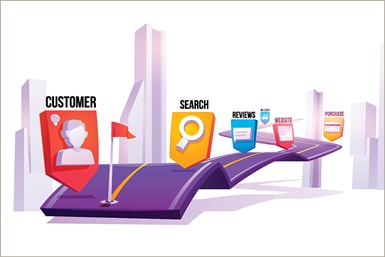Get Emotionally Smart and Meet Demands of Modern Marketing
Modern marketing involves far less whiskey guzzling and far more data and introspection. So let’s explore the emotions behind the journey and focus on steps to gain emotional intelligence and meet the demands of modern marketing.
#brandbuilding #customerfocus

Goodbye, Mad Men. Hello, emotional intelligence. Modern marketing involves far less whiskey guzzling and far more data and introspection.
So let’s explore the emotions behind the journey.
Traditionally, marketing has been seen as a simple act of promoting and selling products or services. Whether sales were made by invoking fear, introducing famous spokespeople, or rolling out snappy tag lines, marketing meant using a gimmick to make money. Those days are over. Modern customers are smarter — and far more discerning.
Follow these steps to gain emotional intelligence and meet the demands of modern marketing.
Step 1: Redefine Marketing. Stop trying to make new marketing formats follow old marketing rules. Social media is a prime example. Far too many companies still think a social media presence just means posting traditional media online. The format and utility of digital consumption is too unique to simply place your digital brochure on Facebook. New mediums require new approaches . . . several approaches and several new resources.
Step 2: Embrace storytelling. Stories are more powerful than pitches. Even in a field — like manufacturing technology — that may initially seem to be more about machines than making connections, there are powerful stories everywhere that are worth telling.
The manufacturing technology industry is ripe with stories of success, perseverance, and failing first and succeeding second (or third). You don’t have to look hard to find tales of strong relationships, powerful inspirations, and unparalleled dedication. Look around your shop floor and to your dedicated employees to find stories that resonate.
Trust us. You have great stories. IMTS Network showcased the incredible people who are the heartbeat of the industry throughout a full week of programing in September. And we’re still seeking — and finding — stories. Check it out at IMTS.com.
Step 3: Tap into emotions as a motivator. Ultimately, marketing is all about motivation. And few things are more motivating than emotions. Storytelling works because it elicits real emotions. Make a customer feel, and you can make them buy.
Help prospects see themselves in your testimonials. Show future customers your connection to the community with visual storytelling. Showcase the real people on your shop floor and highlight their true stories of success and ingenuity.
Step 4: Create a New Matrix. You have to think about how new methods will fit in or change your traditional marketing matrix. The key challenge is understanding ROI, so resources can be allocated to maximize performance. This starts with understanding the customer journey and how they are feeling at each step of the process. Why do customers come to you? What do they need? Are they frustrated, eager, confused? Why do customers leave your company? Are they angry, disappointed, or just not engaged?

Once you pinpoint action points and the emotions associated with them, you’ll need to identify tasks that can be automated in the marketing process. For instance, certain tasks are common to most customers and therefore require a lot of time from marketing staff. Think about things like email responses or scheduled follow ups that could be automated. You also should consider developing FAQs to be addressed through your website and on social media. Automating repetitive tasks will give your marketing team more bandwidth to focus on experiences — on telling your company’s story and building emotional connections with customers and prospects.
With more time, marketing professionals can also make use of new tools where manufacturing technology experts and customers come together to learn, network, and get things done. Visit IMTS.com.
Need more information?
Phone: 703-827-5215
Email: info@imts.com
RELATED CONTENT
-
Unusual Marketing Megatrends That Will Impact Your Business
It’s become a sort of tradition on The Marketing Companion to spend a little time on marketing megatrends and Mark and Brooke Sellas cover some provocative ideas on the show. Here are a few of the big ideas they talk about in this episode.
-
When Talking About Manufacturing, It’s Time to Connect with Emotions
The last two years have been a roller coaster of emotions for almost everybody on this planet. In current times, feelings and moods are an essential part of the message to connect with audiences. Natalia Ortega, Editor in Chief for Plastics Technology Mexico, writes about why this is a valuable lesson from the pandemic when producing engaging content, even for industry.
-
49 Years at Plastics Technology, and How I Lived to Tell About It
I didn’t know it then, but a couple of lucky chances landed me a career at a single magazine. But there’s more to a satisfying work life than just work.

